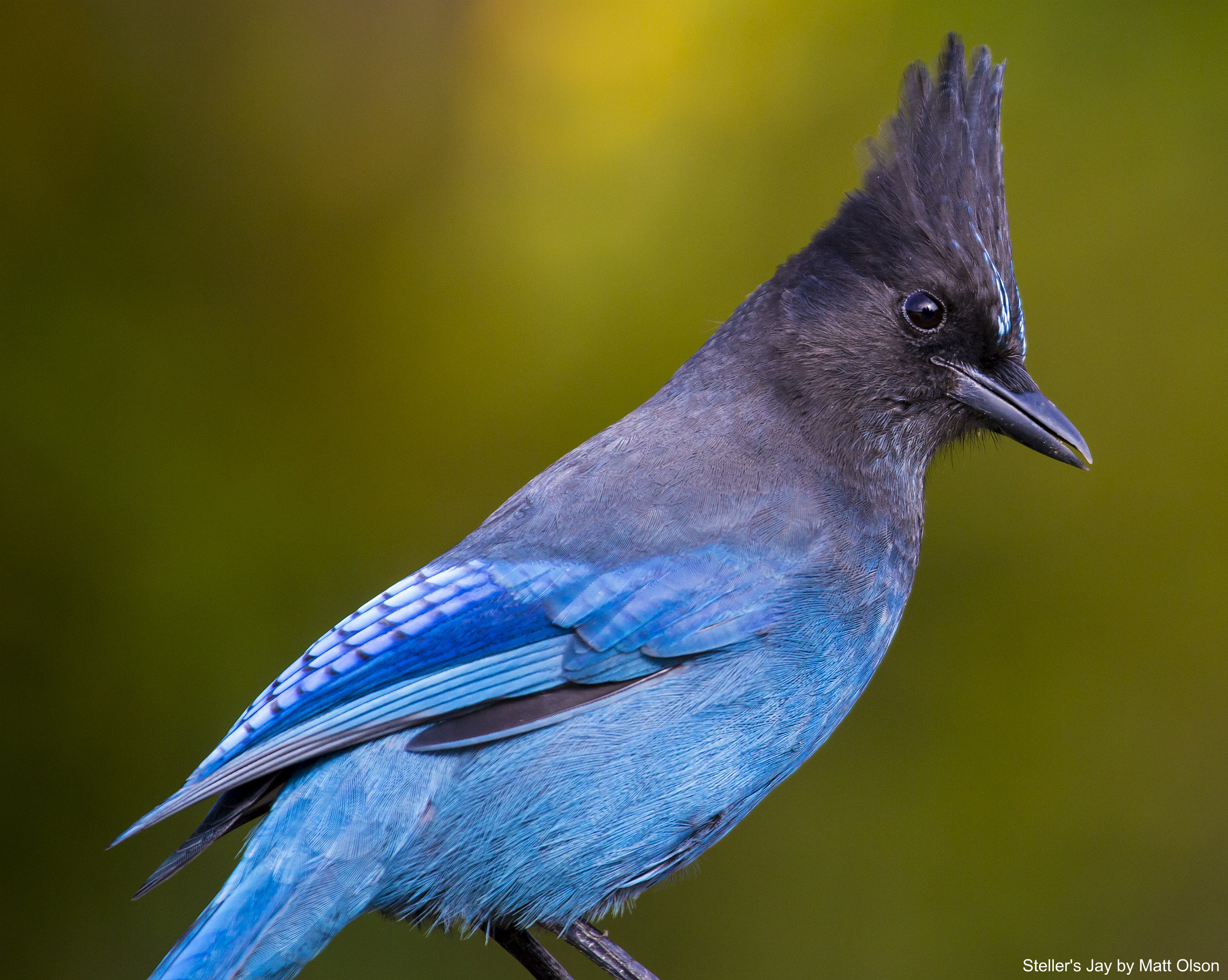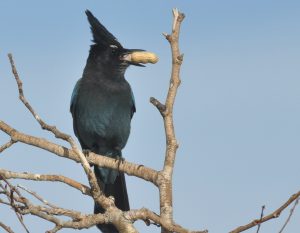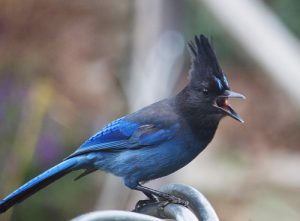Cat Frabs Bird at Feeding Time
Curiosity Killed the Cat, But Not the Corvid
October 2, 2017

By George Zhou, Cornell guest student writer
Imagine this: a nervous bird builds up the courage to leave its nest in search of food. It grabs a nut-looking thing without paying close attention. Returning to safety, the bird realizes that it has picked up a piece of bark, an empty nutshell, or maybe even a nugget of dung! Spending a few minutes in a high-risk situation and coming up empty is an unlucky trip for the bird.
Many animals including birds, rodents, cats, and foxes store food found while foraging. The act of foraging is fraught with danger. As an animal searches for food, it also must be wary of predators. In order to avoid becoming food themselves, foragers prefer easy-to-reach foods to add to their caches. Unfortunately, this becomes a problem when nearby options are limited.
Bolder and Older

Having a sense of curiosity and taking time to sample food items before removing them can be advantageous for foragers. Researchers (Rockwell et. al 2012) at Humboldt State University studied Steller's Jay to determine if foraging style related to a bird's individual characteristics such as age, size, and risk-taking tendencies. The jays lived year-round on the campus of Humboldt State and in the surrounding residential areas. They were accustomed to feeders and were known to cache food. The researchers observed twenty-one platform feeders, each with six evenly placed peanuts inside, to determine what makes some individuals more inclined to sample their food than others. To measure risk-taking, a fake raccoon—a common nest predator—was placed near the designated feeder sites. They watched to see how long it took each jay to approach the feeder, how long each jay stayed at the feeder, and how choosy each jay was with the peanuts.
They hypothesized that the older, larger, and more risk-taking jays were more likely to take time in choosing between peanuts, a behavior known as complex sampling, rather than taking the first peanut they grasped. When broken down, the individual characteristics make sense in terms of foraging behavior: an older jay would have more experience choosing the better food items; a larger jay would be able to carry more things in its beak; and a riskier jay would spend more time at the feeder.

With Risk Comes Rewards
The older and bolder Steller's Jays, and to a lesser extent the larger jays, exhibited complex sampling more often than the rest of the jays. The researchers discovered that the older jays were more likely to know how to select between food options the most efficiently. Risk-taking tendancies, rather than age and experience, contributed to which jays were more likely to take more than one item while at the feeder. In the end, the researchers concluded that an individual bird's foraging pattern is a component of the bird's overall personality and that individual habits such as risk-taking may be more important to foraging than general characteristics such as age and size—especially in species like corvids that have complex behavioral repertoires.
So the next time you are watching your feeder, see if you can identify the distinct behaviors of each visitor. Do some of your regular guests seem more confident in choosing their seed? Can you tell who is who by their feeding style? Realizing these differences in your own backyard is the first step in revealing the unique personalities of your local birds and learning to better accommodate their foraging preferences.
Reference:
Rockwell, C., Gabriel, P.O., and Black, J.M. 2012. Bolder, older, and selective: factors of individual-specific foraging behaviors in Steller's jays. Behavioral Ecology, 23(3):676–683.
<< Return to blog home
Source: https://feederwatch.org/blog/curiosity-killed-cat-not-corvid/
0 Response to "Cat Frabs Bird at Feeding Time"
Post a Comment